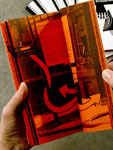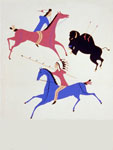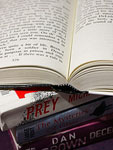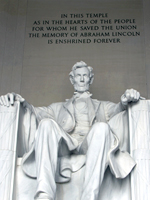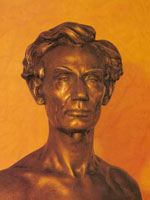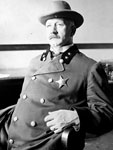We here at Teachinghistory.org use the term a lot and you have probably heard it bandied about lately. But what does it mean? Why is it important to teaching history in the 21st century? And most importantly, what does teaching and learning historical thinking look like in the classroom?
In this first of a series of blogs about historical thinking, we identify resources that introduce and frame this complex set of processes. We also identify features here at Teachinghistory.org that you can explore to see what historical thinking looks like in real classroom lessons and materials.
Instructional Frameworks
We recommend starting with our seven-minute "What is Historical Thinking?" video available on our home page. In it we define historical thinking as the reading, analysis, and writing that is necessary to develop our understanding of the past.
The past is difficult to retrieve and [historical thinking] helps us write accurate stories about what happened and what those events meant.
The past is difficult to retrieve and these ways of reading and analysis help us write accurate stories about what happened and what those events meant. In the video we use the question, "How do we know what we know?" to frame historical thinking.
Five core components of historical thinking help us answer that question. These are:
- Multiple Accounts & Perspectives
- Analysis of Primary Documents
- Sourcing
- Understanding Historical Context
- Claim-Evidence Connection
Frameworks like this one can help you and your students make sense of complex thinking processes. Use it to plan instruction and consider the kinds of tasks that students tackle in your classroom. Introduce it to your students and refer back to it as you teach lessons that incorporate these components.
Browse digital resources that offer related frameworks that can be used in the same way. This movie at Historical Thinking Matters introduces the nature of historical reading and includes a rationale for the civic importance of building your students' historical reading skills. Based on empirical research done by Stanford Professor Sam Wineburg, the video introduces and models four historical reading and thinking strategies: sourcing, contextualization, corroboration, and close reading. Continue exploring Historical Thinking Matters and the Stanford History Education Group website to find instructional resources for using this framework in middle and high school classrooms.
Investigate any of these frameworks to learn more about the nature of "historical thinking."
Check out this entry about the Historical Inquiry: Scaffolding Wise Practices in the History Classroom project produced by scholars at Virginia Tech. Explore video tutorials and text that demonstrate historical reading and thinking using their SCIM-C (summarizing, contextualizing, inferring, monitoring, corroborating) framework. While you’re there, browse their list of links to find related teaching materials.
Visit the Benchmarks of Historical Thinking produced by the Canadian Centre for Historical Consciousness for another helpful framework. Focused on six core concepts including historical significance and the ethical dimensions of history, this site includes lesson plans that show each concept in action.
Don’t forget the Historical Thinking Standards produced by UCLA’s National Center for History in the Schools. Chunked into five sets of skills, including chronological thinking and historical research capabilities, these standards identify composite skills that can help you conceptualize historical thinking in concrete and practical ways.
Investigate any of these frameworks to learn more about the nature of "historical thinking.” Consider using one of them to help you make choices about how you will scaffold and segment instruction and to help your students name and understand the thinking skills they will learn in your class.
What Does Teaching Historical Thinking Look Like in the Classroom?
Visit features here at Teachinghistory.org to see real-world examples of teaching for historical thinking. Browse Teaching in Action to see teachers and students engaged in classroom lessons that integrate historical thinking. Watch fourth-grade students closely analyze John Smith's 1612 map or secondary students use evidence from primary sources to discuss the Black Codes in the post Civil War South.
It is our mission to bring you quality resources for integrating this vital, engaging, and necessary aspect of understanding history into your classroom.
Explore Examples of Historical Thinking to see short videos of historians and students actively analyzing historical sources. Browse these to strengthen your understanding of these thinking processes and use them to model the same for your students.
Explore Lesson Plan Reviews to find K–12 lesson plans that have earned our gold seal of approval—each includes an aspect of teaching for historical thinking. Check out the rubric we use to evaluate these plans and notice the lesson descriptors that directly relate to historical thinking:
- Requires students to read and write
- Requires close reading and attention to source information
- Requires students to analyze or construct interpretations using evidence
Teaching Guides detail specific instructional approaches for building your students' historical thinking capabilities. Try this one about closely analyzing images with elementary students, this one about creating service projects with local history museums, or this one about coaching secondary students in writing thesis statements.
 Don't miss our Teaching with Textbooks feature to find methods for challenging the textbook's privileged place as the final word in the classroom and helping students see it as one account among many.
Don't miss our Teaching with Textbooks feature to find methods for challenging the textbook's privileged place as the final word in the classroom and helping students see it as one account among many.
There are many more resources at Teachinghistory.org for exploring the nature of historical thinking and how to teach for it. Because, yes, it is our mission to bring you quality resources for integrating this vital, engaging, and necessary aspect of understanding history into your classroom. So explore!
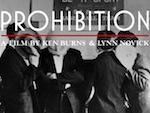
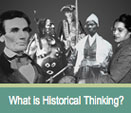
 Don't miss our
Don't miss our 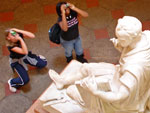
 Have students search for topics both historical and contemporary, and see what the entries for the images they turn up say about copyright. "No known restrictions on publication?" "Unrestricted?" Images created before 1923 should be in the public domain, free of copyright restrictions, as should images created by government organizations. More recent sources may note copyright restrictions, including specific caveats about how a source may be reproduced.
Have students search for topics both historical and contemporary, and see what the entries for the images they turn up say about copyright. "No known restrictions on publication?" "Unrestricted?" Images created before 1923 should be in the public domain, free of copyright restrictions, as should images created by government organizations. More recent sources may note copyright restrictions, including specific caveats about how a source may be reproduced. Another informative stop might be Yahoo's
Another informative stop might be Yahoo's  Now that your students understand how tricky it may be to find sources that can be freely used to tell the story of history, they're in a position to help out, themselves! What historic sites or other traces of history exist in your local area? Are there Creative Commons-licensed images of these on, say, Flickr? If not, how about collecting some? Students can help fill in the gaps in our public record of place and time, and add to the resources available to students like themselves.
Now that your students understand how tricky it may be to find sources that can be freely used to tell the story of history, they're in a position to help out, themselves! What historic sites or other traces of history exist in your local area? Are there Creative Commons-licensed images of these on, say, Flickr? If not, how about collecting some? Students can help fill in the gaps in our public record of place and time, and add to the resources available to students like themselves.